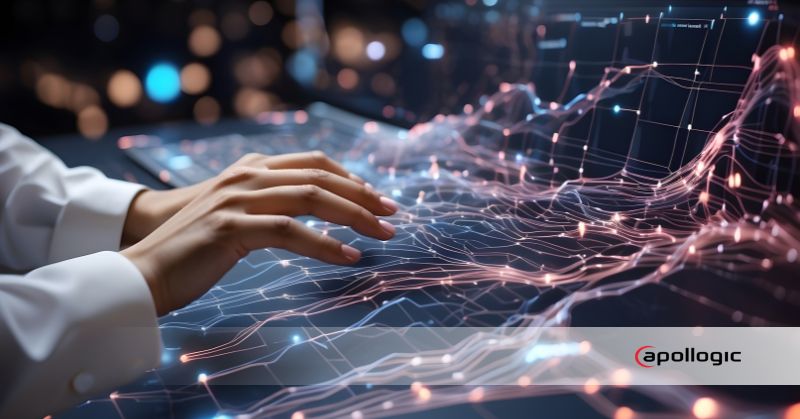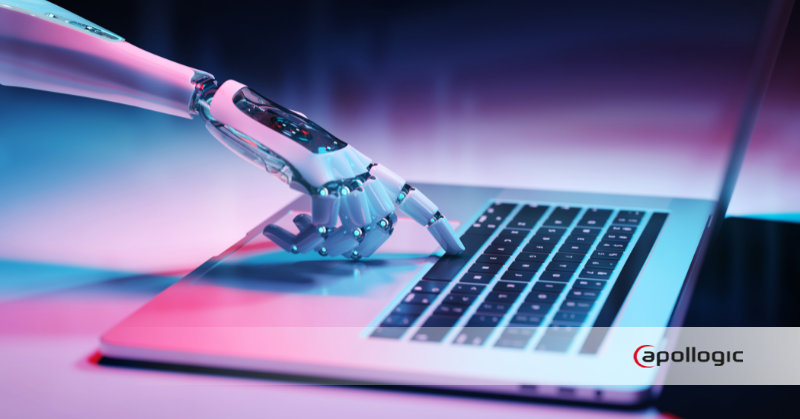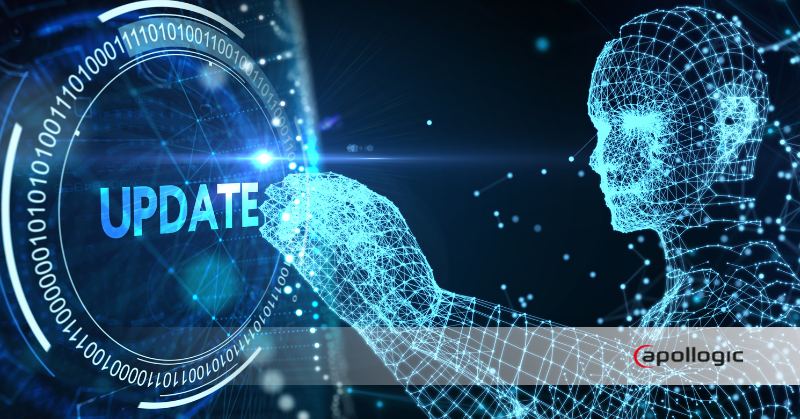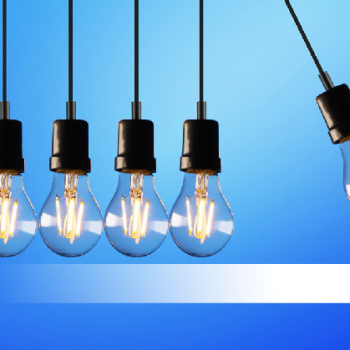10 most interesting Smart City technologies!
In this article I would like to touch upon the subject which interests me professionally and which, in the nearest future, is going to be pertinent to all of us.
Although I’m not a science-fiction, I can quite quickly recall some images from science-fiction films, presenting a vision of the world around us. I don’t have in mind robots utilising artificial intelligence who try to take over the world. My thoughts wander towards vehicles which will help us drive ultra fast on the roads, intelligent computers which will facilitate communication between people, a series of friendly machines which will enhance the comfort of work in the office or at home. Those images bring to mind the intelligent city from a science-fiction film “Minority Report” whose vision is very close to the present technological advancement.
In the presented scene John Anderton, played by Tom Cruise, receives a personalized advertising message after the retina of his eye has been scanned. This type of personalization in marketing takes place today. All thanks to microcomputers called beacons which contact our smartphones via special applications, and can send us a dedicated advertising message.
Technological solutions, known so far only from science fiction films, are thus becoming part of our reality. The good news is that those technologies are becoming ever more user-friendly, and designed from the viewpoint of for our physical and mental conditions. It is presently regarded to be one of the technological megatrends, within the framework of human-oriented technologies.
This trend is also reflected in the solutions which are part of the concept of smart cities. The idea of Smart City presupposes the use of new technologies to improve the quality of life of urban residents, while the technologies used should be available to everyone and easy to use. Smart City is also sustainable development and wise management of natural resources, as you will see in a moment.
There are numerous benefits of dissemination of the idea of the Smart City. I would like to present ten of them, in my opinion the most interesting applications of technologies which can solve real problems of residents and city authorities, but also help us in our daily life, making it more comfortable and easier:

- Intelligent roads – the concept assumes equipping roads with special sensors, robots and other elements in order to improve the comfort of driving. The use of heating elements can prevent the roads from freezing, while the use of nanotechnology and self-repairing materials can keep them in good condition. Moreover, the sensors in the roads can notify drivers of adverse conditions and unexpected events such as accidents or congestions. Data collected in this manner will also be used to unblock traffic jams. The sensors will also be able to generate information about problems with road surface and places requiring repairs for engineering and maintenance services.
- Waste Management – an interesting example of a solution being part of the Smart City concept is intelligent management of municipal waste. The technology involves placing sensors in waste containers, continuously monitoring the level garbage cans filling. Based on information from the sensors, the optimal scheme of garbage trucks route is created, taking into account only the filled garbage cans. This way, the vehicles do not have to stop at every garbage can, only at those which actually require emptying.
- Monitoring green areas – new technologies may also serve the environment, for example:
- Sensors in the soil – the measurement of the soil condition, temperature and microclimate can optimize irrigation and spraying of crops, which will help maximize the quality and production of cereals, vegetables and fruits,
- Sensors in the forests – monitoring exhaust gases and determining the conditions of combustion in forests will define areas at risk of fire and avoid the spread of fires.
- Monitoring air pollution – the media have been going on about the smog in Krakow for a long time. Unfortunately, the problem of smog is also true about other Polish cities, including Poznan, where concentration norms and limits of harmful dust are often exceeded. Information on air pollution often can not be sourced from the entire urban area as, for example in Poznan, there are only two measurement stations (in Polanka and in the Botanical Garden). If sensors were installed throughout the city, information about pollution would be more accurate and actually linked to the zone in which we are currently in.
- Measurement of water quality – Smart City solutions can monitor the quality of tap water in real time, and detect spills in rivers and report in real-time on the current level of pollution in bodies of water.
- Smart parking spaces – According to various studies, about 30% of traffic congestion in cities is caused by drivers who are looking for a parking space. Installing the sensors in car parks in the centres of cities will help drivers to plan parking before setting off.
- Intelligent lighting – such projects involve remote management of lighting in the city, where individual lamps can be turned off or dimmed to a certain level at any time, depending on the time of day or season, as well as during scheduled events taking place in town. As a result, electricity consumption could be reduced, as well as CO2 emissions to the atmosphere. Intelligent lighting has reached Poland – Szczecin to be precise – where Philips City Touch system was implemented which allows communication and control of individual light points, therefore creating an intelligent network.
- Internet of Things in buildings – buildings offer a wide range of possibilities for engineers designing intelligent solutions. Sensors fitted in building can monitor the technical condition of elements of a building, as well as the condition of materials. The sensors can also be installed in the ground on which the building is standing, and inform engineers about its condition as well as possible processes of erosion. An interesting example of new technology used inside a building is a design of a lift created as a joint effort of two giants: steel producer ThyssenKrupp AG and Microsoft. The sensors fitted in the elevator collect data on the lift condition. Based on data collected in the system it can be determined which of the elevators require maintenance. What is more, utilising Machine Learning techniques and predictive analysis, it is possible to estimate when the next fault may occur. Providing real-time data facilitates effective elevator repair or maintenance before there is a serious fault. Similar use of sensors can also be successfully implemented in factories. Sensors placed in machines may, in fact, monitor technical condition and status of materials, thus prevent long downtimes in production.
Here you can learn more about the smart lift:
- Location and geolocation – solutions of this type can, for example, be used in navigation systems inside buildings. SmartUni mobile application is a remarkable example of the use of this technology, thanks to the students of the University of Łódź can easily reach yet unknown places and efficiently navigate the university buildings. The system, created in collaboration with Linteri, combines a mobile application, beacons and a proximity platform. Besides navigation, the application delivers university life news, advice on daily functioning in Łódź, as well as information about working hours of Dean’s offices, libraries or dormitories. With the appropriate sensors it is possible to also locate objects or animals, as well as track children.
- Intelligent transport systems – ITS is a range of solutions designed to automatically adapt to the current volume of traffic, time of year, day, and infrastructure. These include, for example, intelligent traffic lights which can control movement of vehicles in cities, depending on demand in a given place and time, which increases the liquidity of transport in the streets and saves road users’ time. Such solutions can also successfully replace the police which, in critical situations, used to control traffic. The ITS also includes monitoring safety on the roads, controlling road lighting or manage electronic payments in urban transport.
The world is changing very rapidly, and technological progress is so fast that what surrounds us today is a reality which in a few years may look quite different. This is partly because the technology is subject to the law of exponential growth, which is proved by the rate of development of modern computers. Their capacity is 130 000 times greater than their counterparts in 1990. The real revolution will be initiated, however, when the concept of the Internet of Things becomes widespread which assumes that individual objects can communicate with each other via a computer network. As you may have noticed in the examples I have given, the Internet of Things now occupies a prime position among the Smart City technologies.
I am happy to see today’s technological advances. I am in favour of human-oriented technologies, which is a clear trend which fosters human-friendly solutions. I also believe that smart use of new technologies and proper management of natural resources can bring a lot of good to the world. Anyway, see for yourself: https://earth2045.com/.
PS: be sure to drag the mouse to the right! 😉
The article was written by Joanna Wójciak, Marketing Specialist at Apollogic.
If you want to learn more about Apollogic activities in the field of the Internet of Things, go to: Our initiatives tab.
- On 10/02/2016







0 Comments